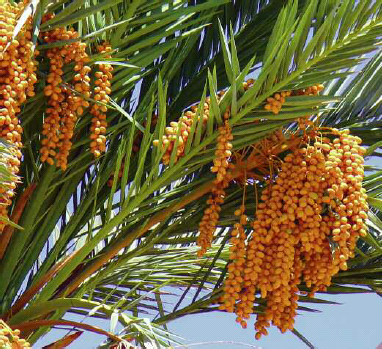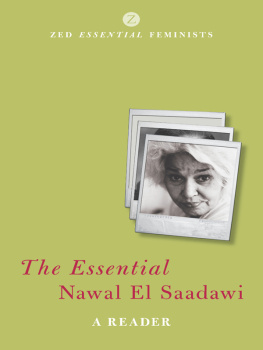Dates
A Global History
Nawal Nasrallah
REAKTION BOOKS
Published by Reaktion Books Ltd
33 Great Sutton Street
London EC1V 0DX, UK
www.reaktionbooks.co.uk
First published 2011
Copyright Nawal Nasrallah 2011
All rights reserved No part of this publication may be reproduced, stored in a retrieval system, or transmitted, in any form or by any means, electronic, mechanical, photocopying, recording or otherwise, without the prior permission of the publishers.
Page references in the Photo Acknowledgements and
Index match the printed edition of this book.
Printed and bound in China by C&C Offset Printing Co. Ltd
British Library Cataloguing in Publication Data
Nasrallah, Nawal.
Dates : a global history. (Edible)
1. Dates (Fruit)
2. Date palm History.
3. Date palm social aspects.
4. Cooking (Dates)
I. Title II. Series
641.3 462-DC22
eISBN: 9781861899842
Contents

Introducing the Date

Palm-trees grow in great numbers over the whole of the flat
country, mostly of the kind which bears fruit, and this fruit
supplies them with bread, wine and honey.
Herodotus (484425 BC), describing Babylonia
The date is a unique fruit, enjoyed in three states of ripeness. When fully ripe but still firm, it is bright yellow or red, refreshingly crunchy, juicy and moderately sweet. As it further ripens, it gradually softens, starting from the top all the way down to the calyx. The date looks partly firm and yellow or red, and partly moist and brown and almost translucent. Then the entire fruit becomes soft, loses its crunchiness and tastes even sweeter and more succulent. If left on the tree to dry naturally in the sun, its skin shrivels and darkens in hue. The date develops a scrumptious candy-like chewy texture. Technically, the date can be labelled as fresh when eaten right after it has been picked, but since it is really at its driest state at this stage, it is labelled dried. In this state, it is stored and transported throughout the world, and commercially marketed as soft, semi-dry or dry, depending on the date variety.
What further sets this fruit above others is this: besides enjoying it as a fresh fruit or dessert after meals or between meals, in the arid zones, where it grows most successfully, it is the meal itself. The date is an affordable, concentrated energy, staple food, comparable to wheat, potatoes and rice in other parts of the world, where Mother Nature is more generous. It is called bread of the desert and cake for the poor. In its dried form it is an important crop in fighting global hunger. On the high seas in pre-modern times it sustained Arab sailors during their long voyages of trade and discovery. More importantly, with its help they managed to stave off the dangers of scurvy, a deficiency disease to which European sailors were susceptible.

Ripe red dates, called berben in Iraq. In this khalal state, they are still firm and moderately sweet.

Clusters of golden ripe dates in the khalal stage, when still hard and crunchy, a little astringent and moderately sweet.
The date tree itself is no less unique a tall and beautiful palm with evergreen feathery leaves radiating like sun rays from the top of its single stem. It is both impressively bountiful and versatile. The tree flourishes in arid areas where other trees may barely survive. It is indigenous to the Old World along an area extending from northwest and north Africa, particularly in the Sahara desert oases, through southwestern Asia to India and Pakistan. In Europe today the only place where it is commercially successful is Elche in Spain, whereas in the New World it mostly thrives in the hot and dry region of southern California. In the southern hemisphere its cultivation is increasing at places like the arid regions of Namibia in Africa and Alice Springs in the Northern Territory of Australia.

Date groves in Oman, in the southeast corner of the Arabian Peninsula, where date palm cultivation is a mainstay for farmers.
Its botanical name is Phoenix dactylifera, commonly called date palm. To set it apart from its many relatives, which are not as edible, it is sometimes referred to as the true date palm or edible date palm. These relatives include the dwarf date palm (P. roebelenii) and Canary Island date palm (P. canariensis). These two varieties mostly serve as ornamental trees. The wild Indian date palm (P. sylvestris), which is exploited for the sugar derived from its sap, looks very much like the date palm but its fruit is not edible. It is believed to be the ancestor of the true date palm.
Whats in a Name?
They are the most esteemed, affording not only plenty of nutriment, but a great abundance of juice; it is from these that the principal wines are made in the East. These wines are apt to affect the head, a circumstance from which the fruit derives its name.
Pliny the Elder (AD 2379) describing a variety of Middle Eastern dates called caryotae, stupid head
Phoenix dactylifera is an ancient Greek nomenclature, derived from Phoenicia, the ancient narrow coastal region between the Mediterranean Sea and the Jordan Valley that makes up modern-day Lebanon and parts of Syria, Israel and Palestine. Phoenicia means the purple land in Greek, so called because it was famous for the purple dye extracted from the poisonous sea snail Murex. The date palm used to grow in abundance in that region, and the Greeks thought it was the homeland of the tree. Therefore they gave it the name Phoenix (the tree of Phoenicia) and it became the regions symbol. It figured on Phoenician coins as well as Carthaginian ones, struck in Sicily. To the Roman who could not read the Carthaginian language, Punic, the date palm on the coin symbolized Phoenicia, which itself established ancient Carthage, near the present-day site of Tunis.



















